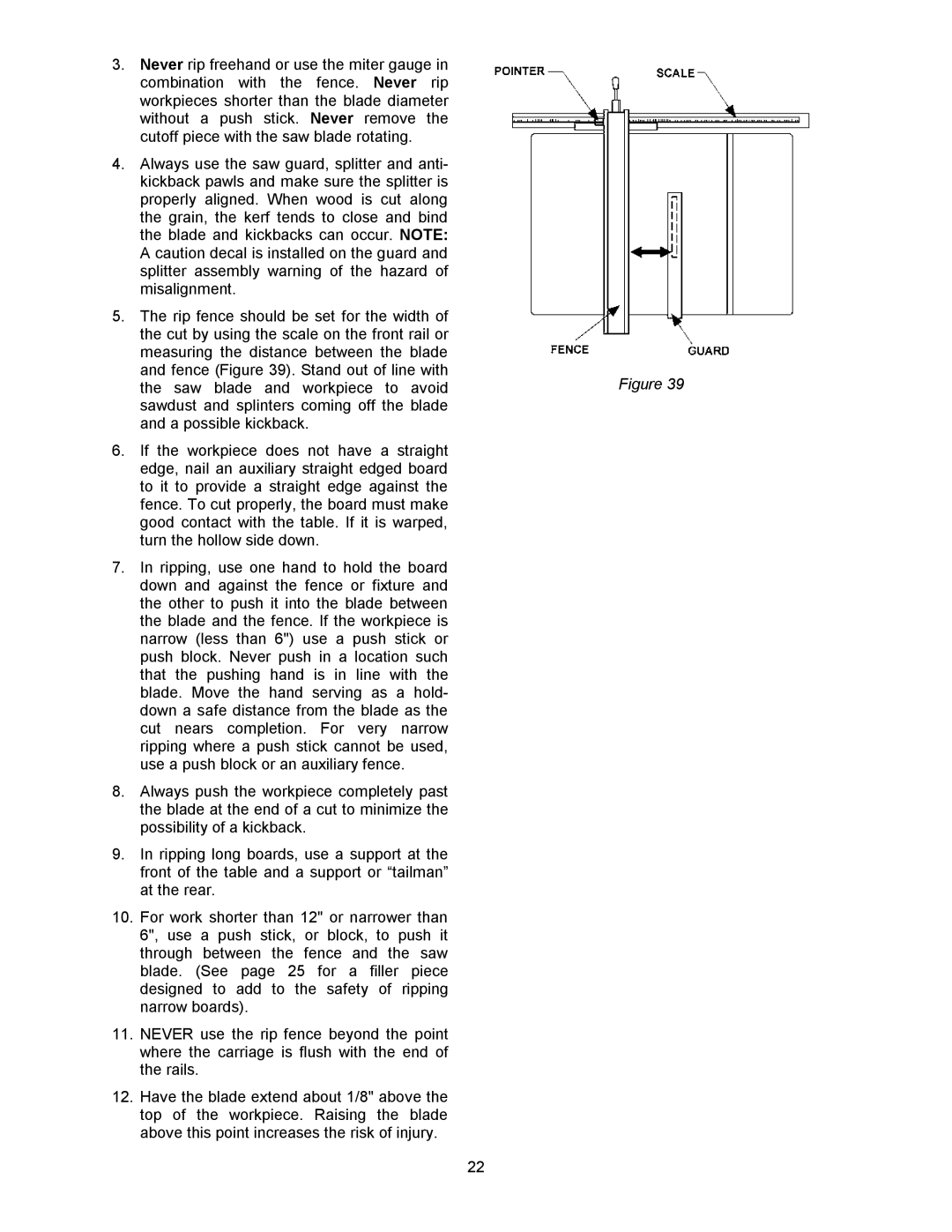
3.Never rip freehand or use the miter gauge in combination with the fence. Never rip workpieces shorter than the blade diameter without a push stick. Never remove the cutoff piece with the saw blade rotating.
4.Always use the saw guard, splitter and anti- kickback pawls and make sure the splitter is properly aligned. When wood is cut along the grain, the kerf tends to close and bind the blade and kickbacks can occur. NOTE: A caution decal is installed on the guard and splitter assembly warning of the hazard of misalignment.
5.The rip fence should be set for the width of the cut by using the scale on the front rail or measuring the distance between the blade
and fence (Figure 39). Stand out of line with
the saw blade and workpiece to avoidFigure 39 sawdust and splinters coming off the blade
and a possible kickback.
6.If the workpiece does not have a straight edge, nail an auxiliary straight edged board to it to provide a straight edge against the fence. To cut properly, the board must make good contact with the table. If it is warped, turn the hollow side down.
7.In ripping, use one hand to hold the board down and against the fence or fixture and the other to push it into the blade between the blade and the fence. If the workpiece is narrow (less than 6") use a push stick or push block. Never push in a location such that the pushing hand is in line with the blade. Move the hand serving as a hold- down a safe distance from the blade as the cut nears completion. For very narrow ripping where a push stick cannot be used, use a push block or an auxiliary fence.
8.Always push the workpiece completely past the blade at the end of a cut to minimize the possibility of a kickback.
9.In ripping long boards, use a support at the front of the table and a support or “tailman” at the rear.
10.For work shorter than 12" or narrower than 6", use a push stick, or block, to push it through between the fence and the saw blade. (See page 25 for a filler piece designed to add to the safety of ripping narrow boards).
11.NEVER use the rip fence beyond the point where the carriage is flush with the end of the rails.
12.Have the blade extend about 1/8" above the top of the workpiece. Raising the blade above this point increases the risk of injury.
22
